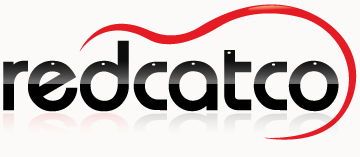Never Loose Another Thought Again!
There is one simple habit that has revolutionised every day, since the first day that I adopted it. The habit costs almost nothing, takes very little time and reduces the mental load of today’s high-speed, high-tech life. It also increases mental productivity and creativity.
What is it? Very simply, it is the habit of writing things down – capturing those fleeting ideas that come to mind during the day or night. How many brilliant ideas are lost this way, surfacing, only to disappear seconds later as they are crushed by another thought or forgotten. It must be costing the globally economy billions of dollars/pounds/yen, and all for the sake of a pen and bit of paper and a good habit. Perhaps thousands of new inventions are being lost every day around the world. Imagine if they had all been captured and explored. We could all be living on the moon by now, powered by some form of energy that has been left tragically undiscovered. Ok, I might be over egging it a bit, but I am sure you want to play your part in eliminating this global waste.
You could employ a personal assistant to follow you around and write down your every thought and word. That is the preserve of the super rich, but you can achieve the same results at a fraction of the cost. Which medium works for you depends on how you think. If you think visually, in diagrams and connections, a pen and paper will be great. If you want a more gadget led approach, how about a PDA with a touch screen and drawing application, or a tablet PC? Microsoft’s OneNote application is not well known, but it deserves to be. You could try a mind mapping application, such as MindManager or FreeMind (both for Mac or PC). If you think in linear, sequential lists, then a pen and paper is just as well, but an audio method will be a practical alternative; Either a voice memo device – I use the MicroMemo attached to an iPod – or the built-in recording capability that most phones seem to have these days, my trusty Sony Ericsson W880i does a cracking job. The big plus of a pen and paper is that the batteries never go flat, they are truly ‘instant on’ and they don’t crash at opportune moments. Why do PDAs and phones do that?
The trick is to consistently capture the thoughts that can nag at your subconscious if they sink back there. Examples are little to-do items that spring to mind, or ideas that will be useful solutions later. Capture the complete thought, which means recording a little more than you think you need to note. There are few things more frustrating than looking back on your inspired jottings, only to be completely baffled by what you meant. Avoid confounding yourself by capturing that additional detail and context in the moment. This is one of the few instances where more is not less.
One lesson from experience: As far as is humanly possible, keep to a single place to capture those thoughts. Straddling different mediums and technologies is going to make the system high-friction to implement and work. That friction will make the habit harder to keep reliable, and so worry will creep back in. Simplicity of implementation and running is key to success.
The mental relief created by not having to store all of this ‘stuff’ in your mind is huge. The need for lots of worry is eliminated, creating a more peaceful mind. You are no longer concerned by what you might have remembered then forgotten, because you now know it is recorded, all ready for when you choose to return to it.
This return is only delivered if you diligently record things. Your chosen capture device must always be with you, even at your bedside. If it is not, thoughts will be lost. As soon as that happens your subconscious will no longer trust you, and it will start to nag you again. It also re-enforces the habit of creative thinking, and leaves more room for new thoughts and ideas.
If you don’t already carry a way to capture those important thoughts, then treat yourself to a late Christmas present and make a New Year’s resolution to keep it with you always and start capturing those thoughts, so they are never lost again. Perhaps even start with a little pocket notepad and a pencil and build from there.


Thanks for the great and motivating post! I fully agree with you especially on letting your subconscious mind help you achieve success. Do check out http://www.subconscious-mind.org, they have a whole host of interesting and helpful articles.
Sunday Stroll…
We may walk a bit longer today since last weekend…well we won’t rehash technical difficulties
P is for Positive Intent – Patti says (among other insightful things)
This isn’t about being a pollyanna and unrealistic. It’s about…
[…] Write things down and put things in their place. Get over the hump by getting things out of your head and putting them into their place. Once everything is together and organised, you will save hours of scrapping around trying to find ’stuff’. It is worth the investment of time. Enjoy never missing a commitment because it was on a scrap of paper that got dispersed to the edge of the known universe. See: Never Loose Another Thought Again! […]
[…] contacts were lost and memories of events faded – unless it was written of course (one way to never loose another thought again). Technology now enables us to capture that information, potentially forever. The problem used to […]